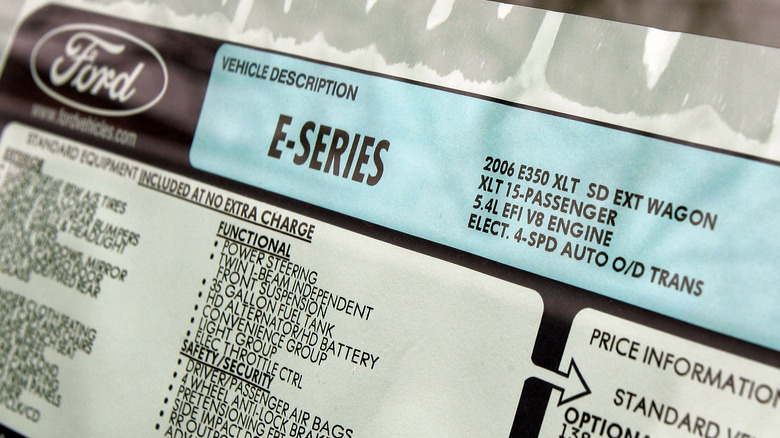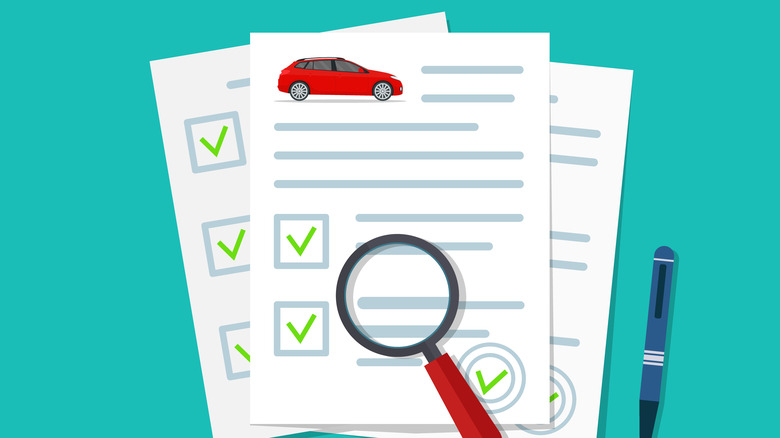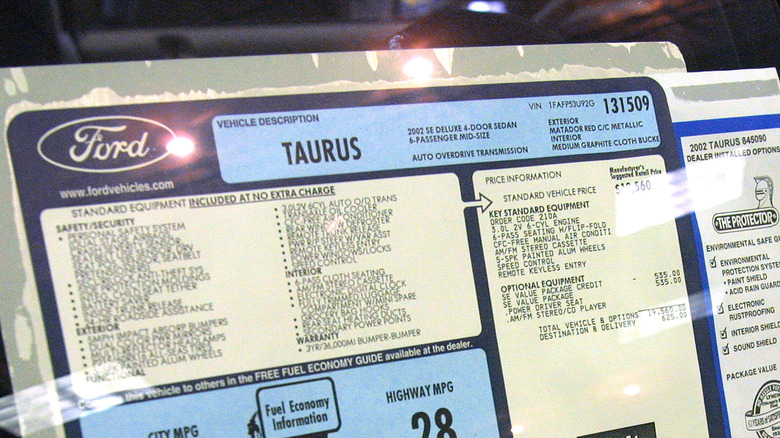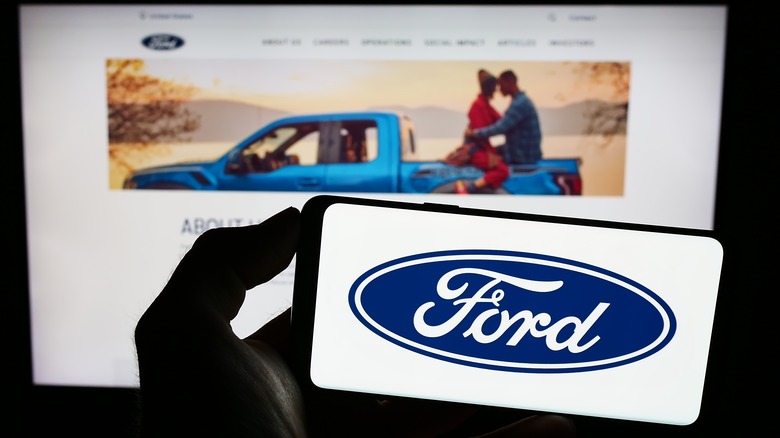5 Ways To Identify Your Ford Vehicle's Transmission Type
An automobile is made up of a veritable galaxy of moving parts. Every last one of those bits and bobs needs to be working in a perfect concert, or the whole thing can fall apart. As a car owner, it can be very helpful to know where and what kind of components your car is packing, but getting that kind of information is rarely as simple as popping the hood and taking a casual glance.
For example, do you happen to know what kind of transmission your Ford vehicle is packing? Even if you know where to look, unless you're already well-versed in car parts, you can't really discern a transmission's exact type just by looking at it. That can be a problem if you're faced with a transmission-centric issue. What if there's a problem with a 10-speed transmission? What if there's been a recall on F-150 transmissions? What if you're using the wrong type of transmission fluid?
Luckily, if you need information about a specific part of your Ford vehicle, like the transmission, the brand offers a handful of ways to obtain that information, located on the car itself and through other sources like documentation and the Ford website.
Check the sticker in the car's window
The simplest place you can look for information on a car, one that requires the least amount of crouching and head-turning, is on the information sticker located either on the driver-side or passenger-side window. This sticker is created when the car is first manufactured, and it's got all kinds of useful information like fuel economy, crash-test ratings, and of course, the equipment included in its build like the transmission.
Of course, this sticker is usually only present when a car is still on the sales lot. If you already bought it, then you probably removed it a long time ago. Check your glove box if you're pretty sure you saved it. If you think you threw it away, you may be able to purchase a replacement sticker from the Ford Show Parts website, though this will only work if your vehicle was manufactured in or after 2007.
Check the label in the door jamb
If the information sticker is long gone, there's another spot you can check for information on your car: the door jamb. Open up the driver's side door on your Ford car and take a look inside the jamb. You should see a distinctive curved sticker within. This is the Safety Compliance Certification label, or just the door jamb label for short.
The Safety Compliance Certification label, much like the window sticker, is printed and placed when the car is first assembled, and contains a similar array of information. Since it's a small label, all of the informational headers are abbreviated — if you're specifically looking for information about the vehicle's transmission, check the header labeled "TR." If your label is missing, you can call the Ford dealer you got the vehicle from to request a replacement, though only if it's been less than five years since the model went into circulation.
Here's the tricky part: every type of transmission utilized by Ford is assigned an alphanumeric code. Ford doesn't have a publicly available sheet of codes, but if you give its help line a call at 1-800-392-3673 or use its support live chat, an agent should be able to identify it for you.
Purchase a build sheet for your vehicle model
If you're missing both the door jamb label and window sticker, then not only can you not easily find information on your Ford vehicle's transmission, but you're missing an easy source of critical information on the whole car. If you want to solve both problems, you can do so by obtaining a build sheet.
A build sheet has a complete list of factory-level information about a vehicle, including its engine type, paint codes, production date, and transmission type, among other factoids. Ford maintains a relationship with a company called Marti Auto Works, which hosts a database of build sheets for all Ford-branded vehicles manufactured in the United States or Canada from 1967 to 2021. If you visit the Marti Reports website, you can request a fresh copy of the report, either delivered to you via mail or sent to your email as a PDF. Just know that this isn't a free service — you'll need to pay a fee to have a build report generated. The good news is that, if all you want to know about is the transmission, you can get a standard report with that information for just $20.
For older Ford vehicles, consult your Vehicle Identification Number
When it comes to sourcing information about just about any vehicle, Ford or otherwise, one of the best sources of information is the Vehicle Identification Number, or VIN for short. You can find the VIN on the door jamb label, the window sticker, or any official documentation for the car like the registration or an insurance policy. A VIN contains multiple codes, each indicating a particular aspect of a car's makeup. The problem, however, is that VIN codes don't contain information about transmissions for modern cars. If your Ford car was manufactured after 1967, you'll want a build sheet to get the information you're looking for. If your Ford car was manufactured in 1945 or earlier, that's a job for a historical research center.
If, however, you've got a vintage Ford vehicle manufactured between 1946 and 1966, then your VIN code may be able to help you. For vehicles from that specific date range, Ford offers a VIN decode letter service. If you call up Ford's help line at 1-800-392-3673 and provide your VIN, they can send you a letter with a code sheet. You can use this code sheet to decode the VIN and glean the necessary information from it.
Visit the Ford Website
If you happened to purchase your Ford vehicle fairly recently, fresh off the lot, then finding information about the transmission may be as simple as visiting the Ford website. Keep in mind, though, that this method will only work for cars that Ford is still actively manufacturing and selling.
Visit the main Ford website and click the Vehicles tab on the top-right of the screen. Select the type of vehicle on the left bar (SUV, truck, EV, etc.), then the vehicle itself from the menu on the right. On the vehicle's page, click the Models tab, then select the specific model you own. On the model's page, scroll down and click on the Specifications bar to open its full list of specs. Scroll down to the Engine Specifications and locate the Transmission Type bar to get a full readout of your model's available transmission types. The types are differentiated by engine type, so whichever engine your car has, it should have a matching transmission.





